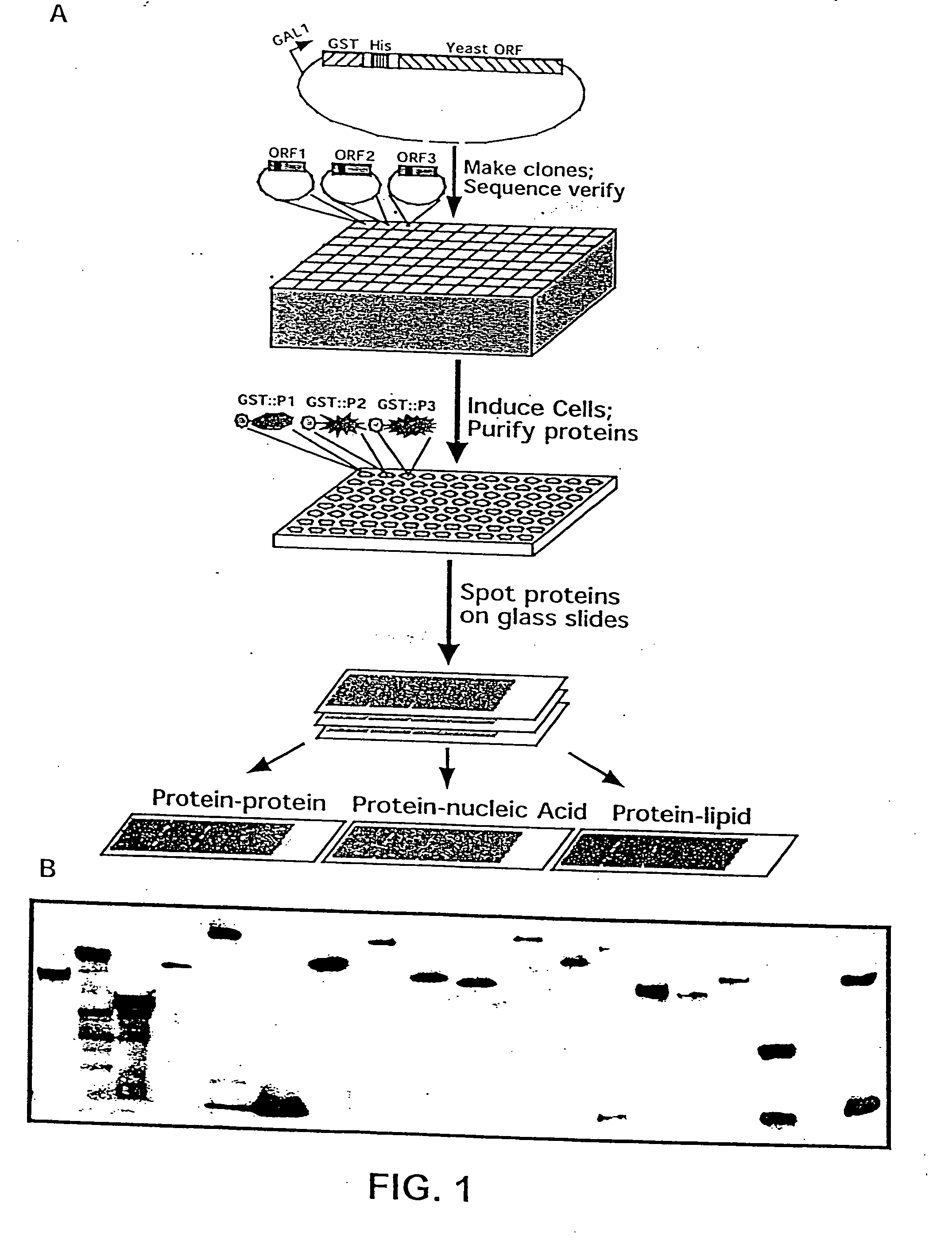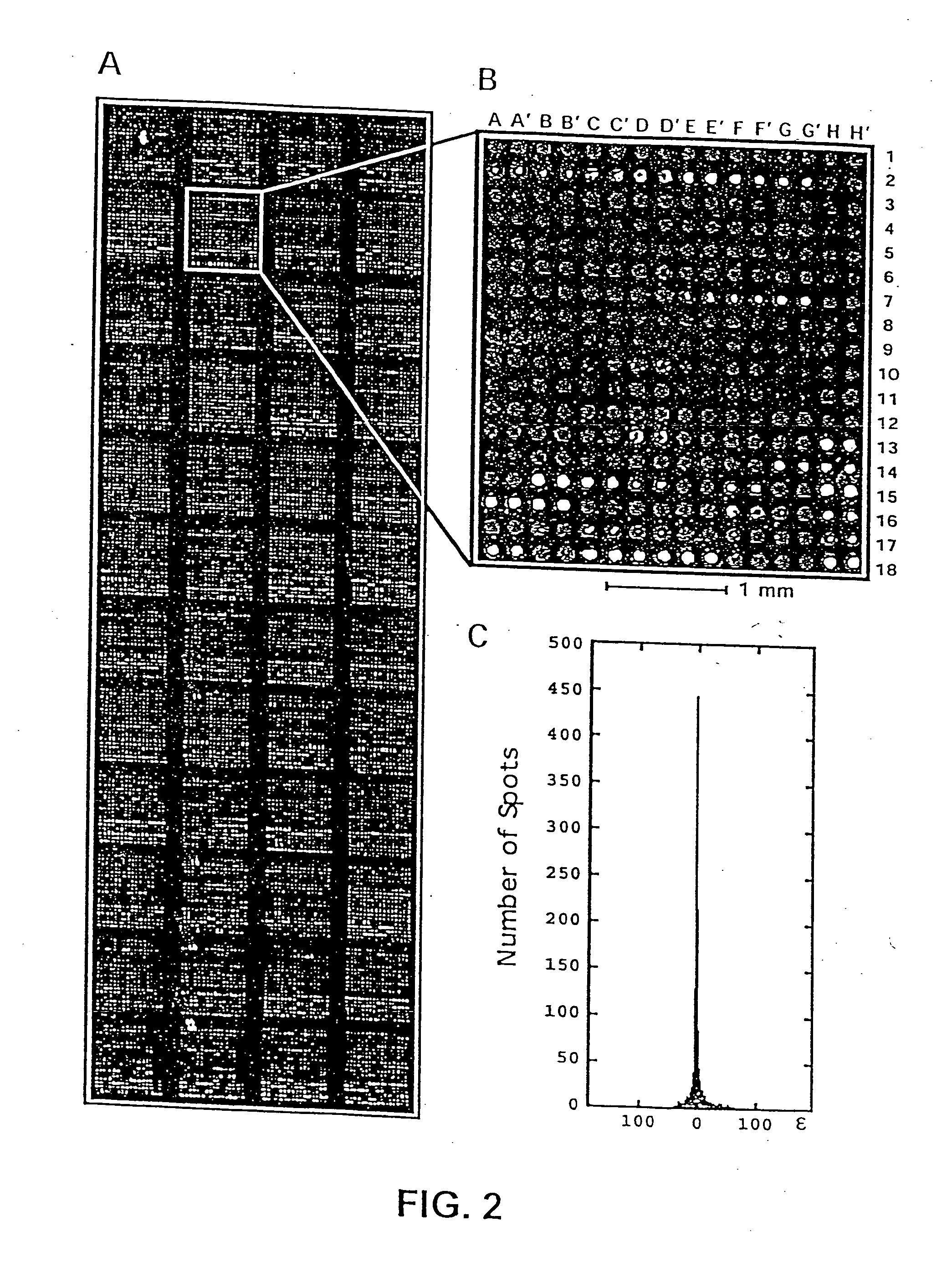Global analysis of protein activities using proteome chips
a technology of proteome chips and protein activity, applied in the field of proteome chips, can solve the problems of inability to generate the necessary expression clones, thousands of individual proteins approximating an entire proteome have not been prepared, and transcriptional profiles do not necessarily correlate well with cellular protein levels, etc., and achieve the effect of inadequacies in folding or expression
- Summary
- Abstract
- Description
- Claims
- Application Information
AI Technical Summary
Benefits of technology
Problems solved by technology
Method used
Image
Examples
examples
[0224] A defined collection of over 5800 proteins from the budding yeast was prepared using high-throughput techniques and screened for many activities including protein-protein, protein-DNA, protein-RNA, and protein-liposome interactions. A large number of novel activities were identified, providing new information concerning known and previously uncharacterized genes.
[0225] To facilitate studies of the yeast proteome, 5800 open reading frames were cloned and overexpressed, and their corresponding proteins purified. The proteins were printed onto slides at high spatial density to form a yeast proteome microarray and screened for their ability to interact with proteins and phospholipids. Many novel calmodulin and phospholipid-interacting proteins were identified; a common potential binding motif was identified for many of the calmodulin-binding proteins. These studies demonstrate that microarrays of an entire eukaryotic proteome can be prepared and screened for large numbers of bio...
PUM
| Property | Measurement | Unit |
|---|---|---|
| depths | aaaaa | aaaaa |
| diameter | aaaaa | aaaaa |
| diameter | aaaaa | aaaaa |
Abstract
Description
Claims
Application Information
 Login to View More
Login to View More - R&D
- Intellectual Property
- Life Sciences
- Materials
- Tech Scout
- Unparalleled Data Quality
- Higher Quality Content
- 60% Fewer Hallucinations
Browse by: Latest US Patents, China's latest patents, Technical Efficacy Thesaurus, Application Domain, Technology Topic, Popular Technical Reports.
© 2025 PatSnap. All rights reserved.Legal|Privacy policy|Modern Slavery Act Transparency Statement|Sitemap|About US| Contact US: help@patsnap.com



